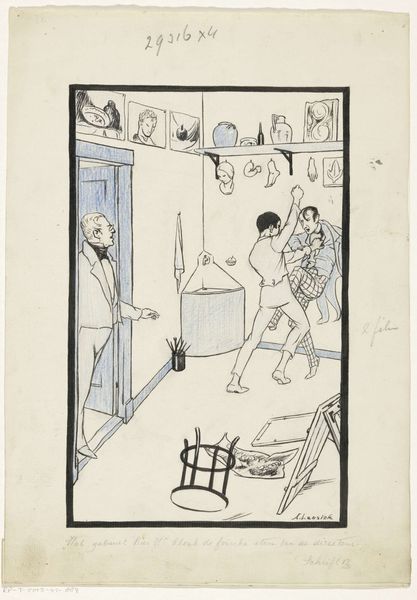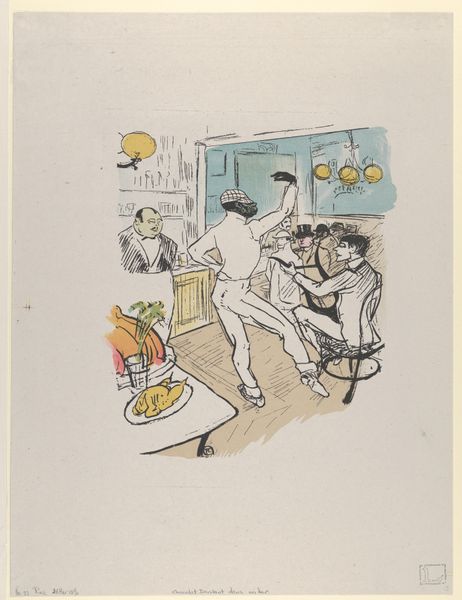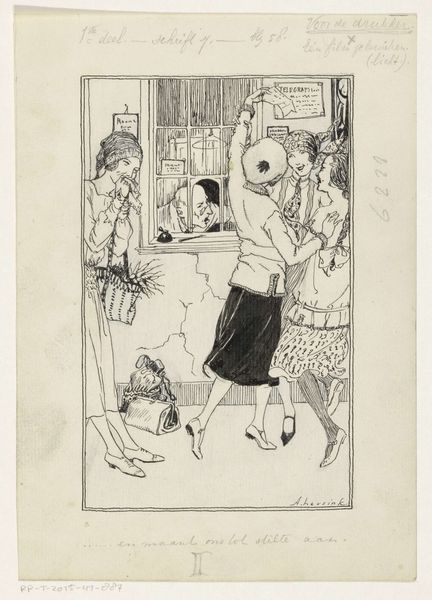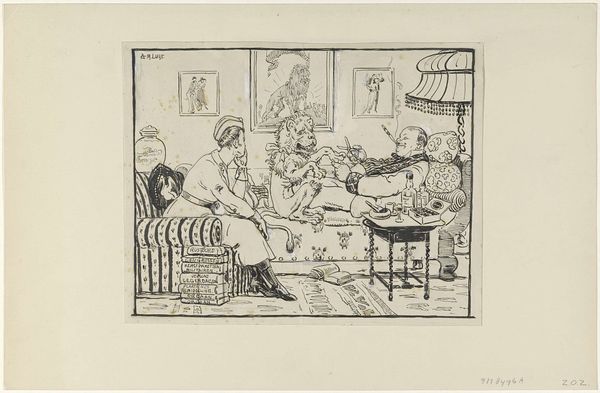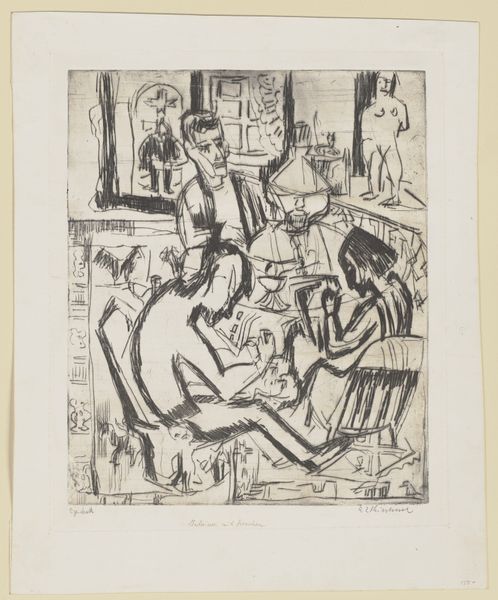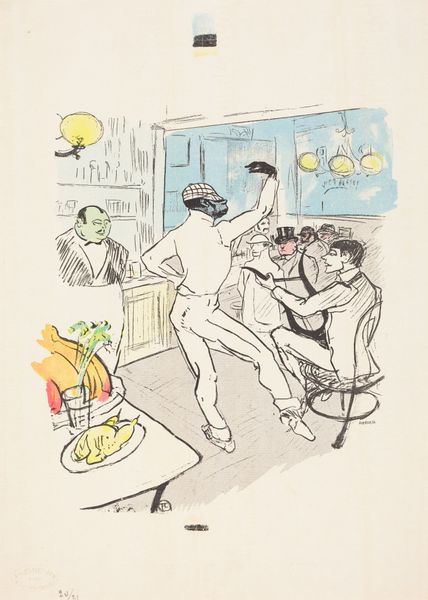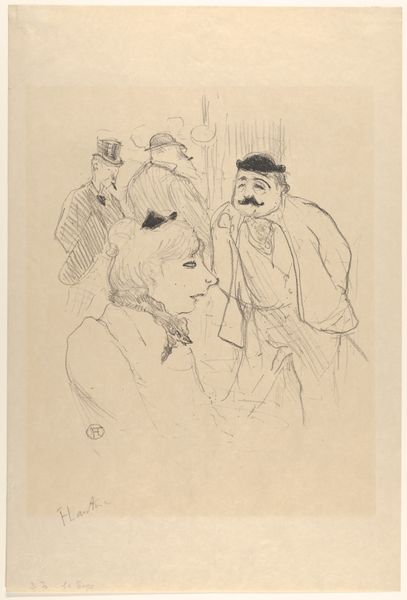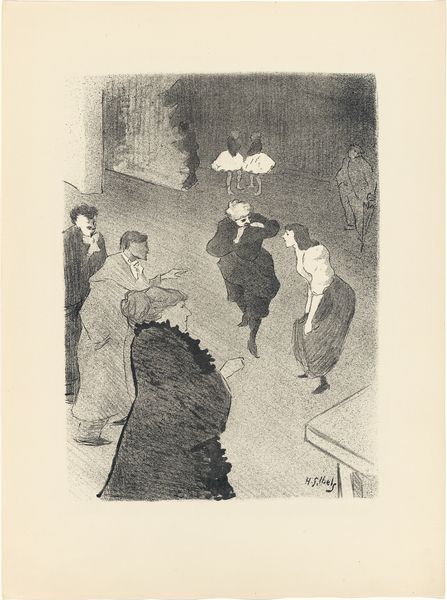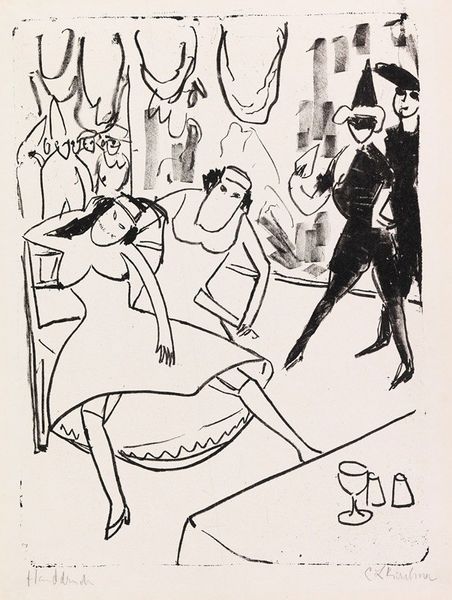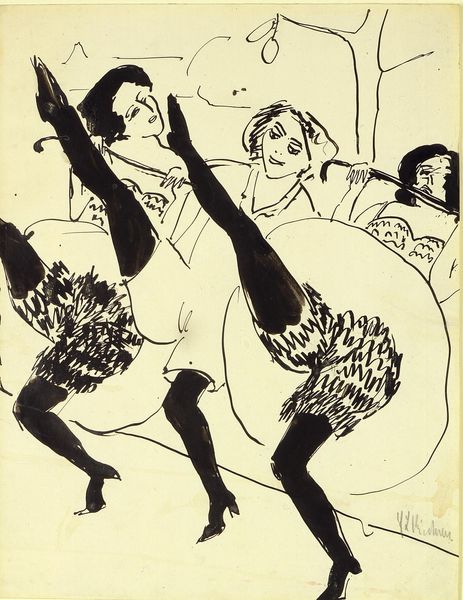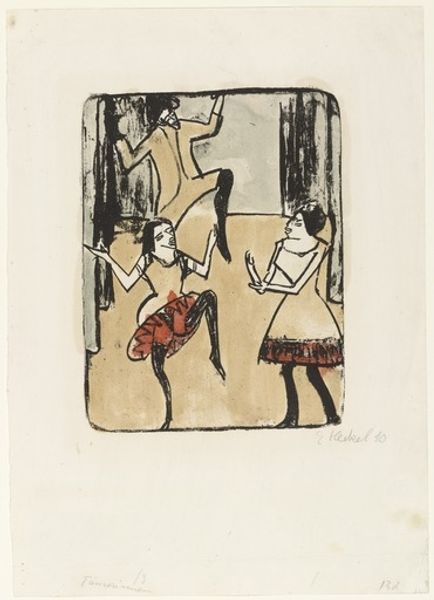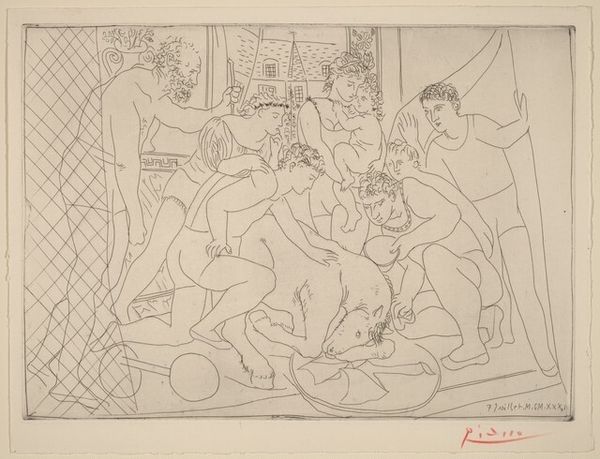
Portret van dansende zwarte clown Chocolat in Engelse Bar in Parijs 1896
0:00
0:00
Dimensions: height 240 mm, width 195 mm, height 384 mm, width 279 mm
Copyright: Rijks Museum: Open Domain
Curator: Good morning, everyone. We’re standing before an intriguing ink drawing by Henri de Toulouse-Lautrec titled "Portret van dansende zwarte clown Chocolat in Engelse Bar in Parijs," created in 1896. It’s currently housed here at the Rijksmuseum. Editor: Immediately, I'm struck by the apparent spontaneity. The swift lines give the scene a tremendous energy, almost capturing a fleeting moment in time, like a snapshot. Curator: Precisely! Lautrec uses pen and ink with remarkable efficiency. Notice the minimalist approach to defining the figures and the setting. Semiotically, this sparse approach heightens the emotional charge; we, as viewers, fill in the gaps. Editor: And let’s consider the subject, Chocolat, the Black clown, entertaining a crowd in what's likely a bourgeois Parisian bar. What were the social dynamics at play in this scene? The sketch almost feels like a documentation of a spectacle, and Chocolat is at the heart of it. He's reduced to being simply the entertainment in a predominantly white space. The materials employed here – the cheapness of the paper and ink- contrast the upscale subject matter. Curator: The use of line is also critical. Lautrec creates depth and shadow through hatching and cross-hatching, demonstrating a sophisticated understanding of tonal values despite the limited medium. Structurally, it is masterful control. He reduces forms to their essence but maintains detail through variations in line weight. Editor: But doesn't that simplicity mask something deeper? Think about the labour behind this image. Lautrec frequented these establishments. He witnessed the exploitation of individuals like Chocolat for entertainment. He then transforms these observations using industrial materials available on a widespread level into a consumable piece of art for wealthy audiences, the patrons of those bars in the first place. It's a feedback loop. Curator: A compelling point, the image does highlight societal voyeurism but from an avant-garde approach that sought to redefine artistic convention. The artist here is creating his visual lexicon. Editor: Indeed! It compels one to reflect on the conditions of production, consumption, and artistic choices that inform its creation. An intersectional gaze between social contexts and the drawing’s function. Curator: After this thoughtful exchange, one cannot deny the visual dynamism inherent in this work. Editor: Absolutely. The history of its production echoes throughout our current era, begging re-evaluation.
Comments
No comments
Be the first to comment and join the conversation on the ultimate creative platform.
